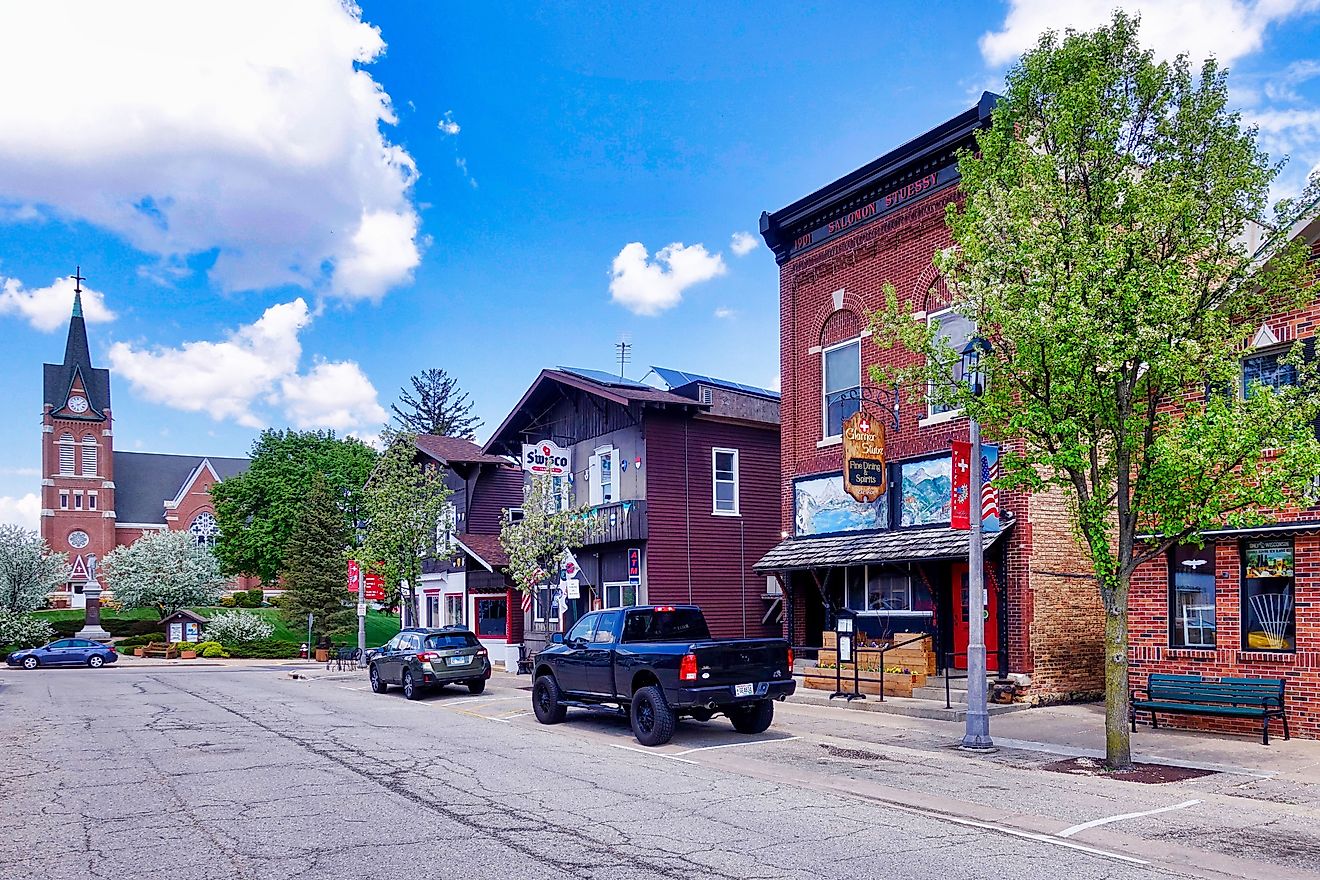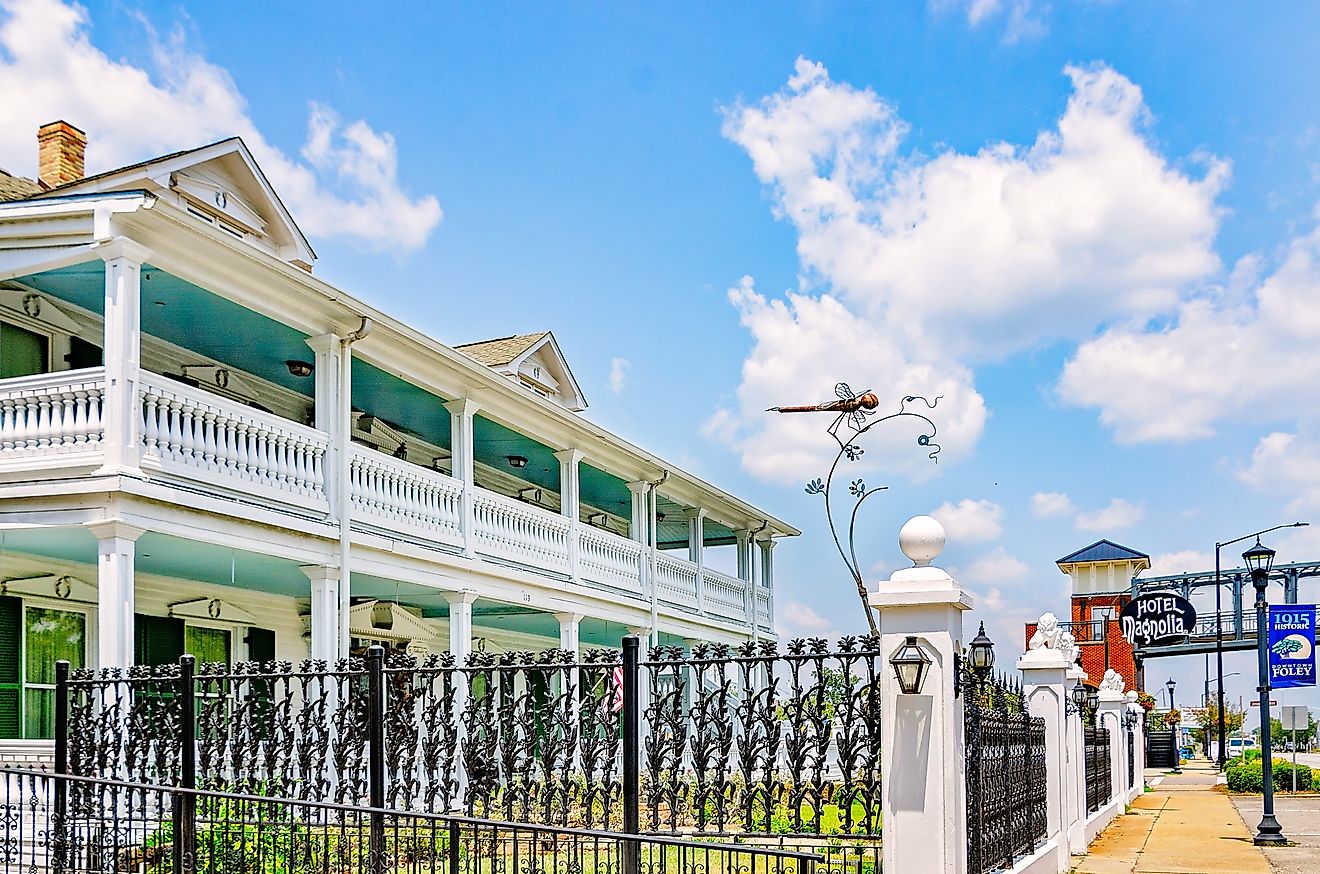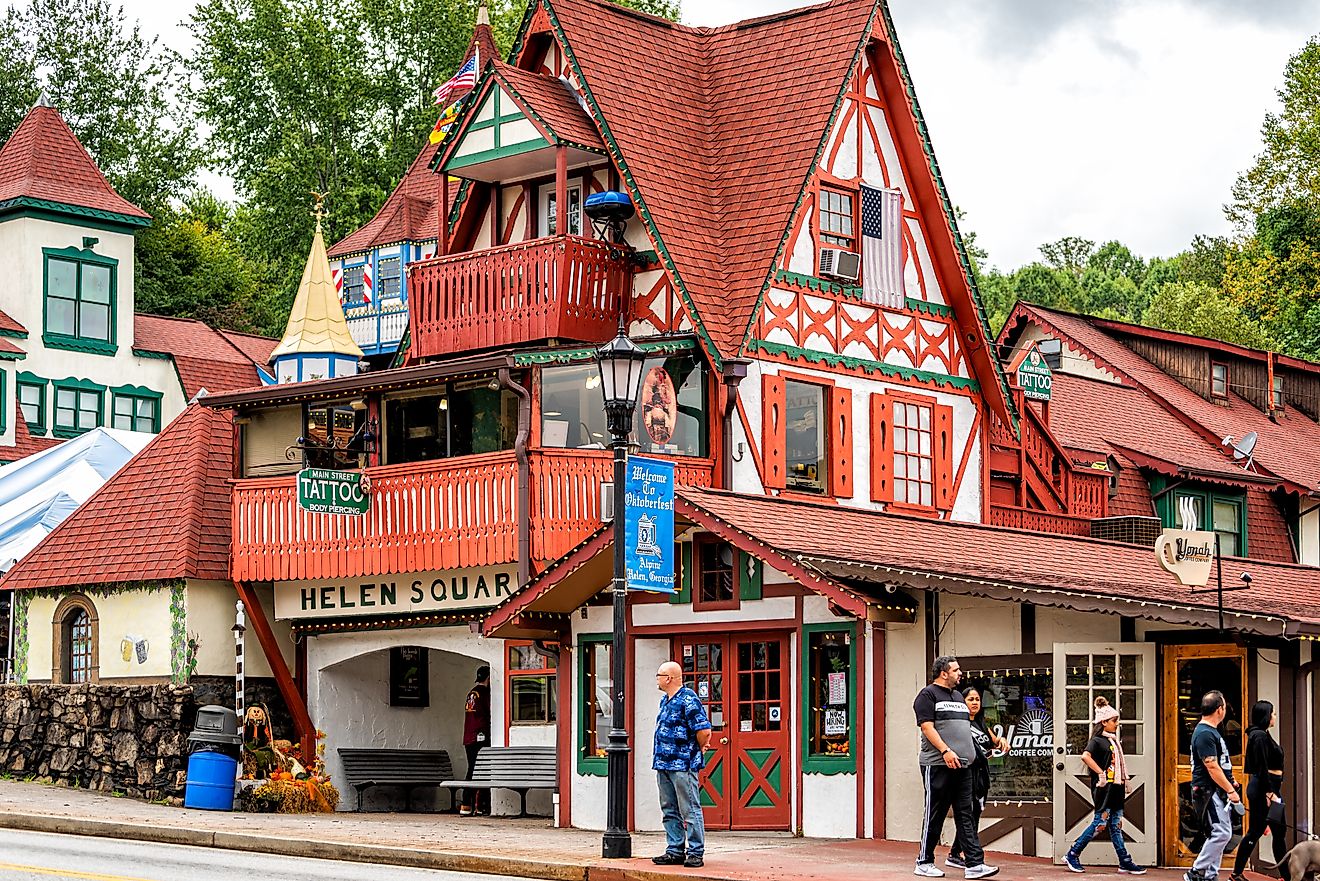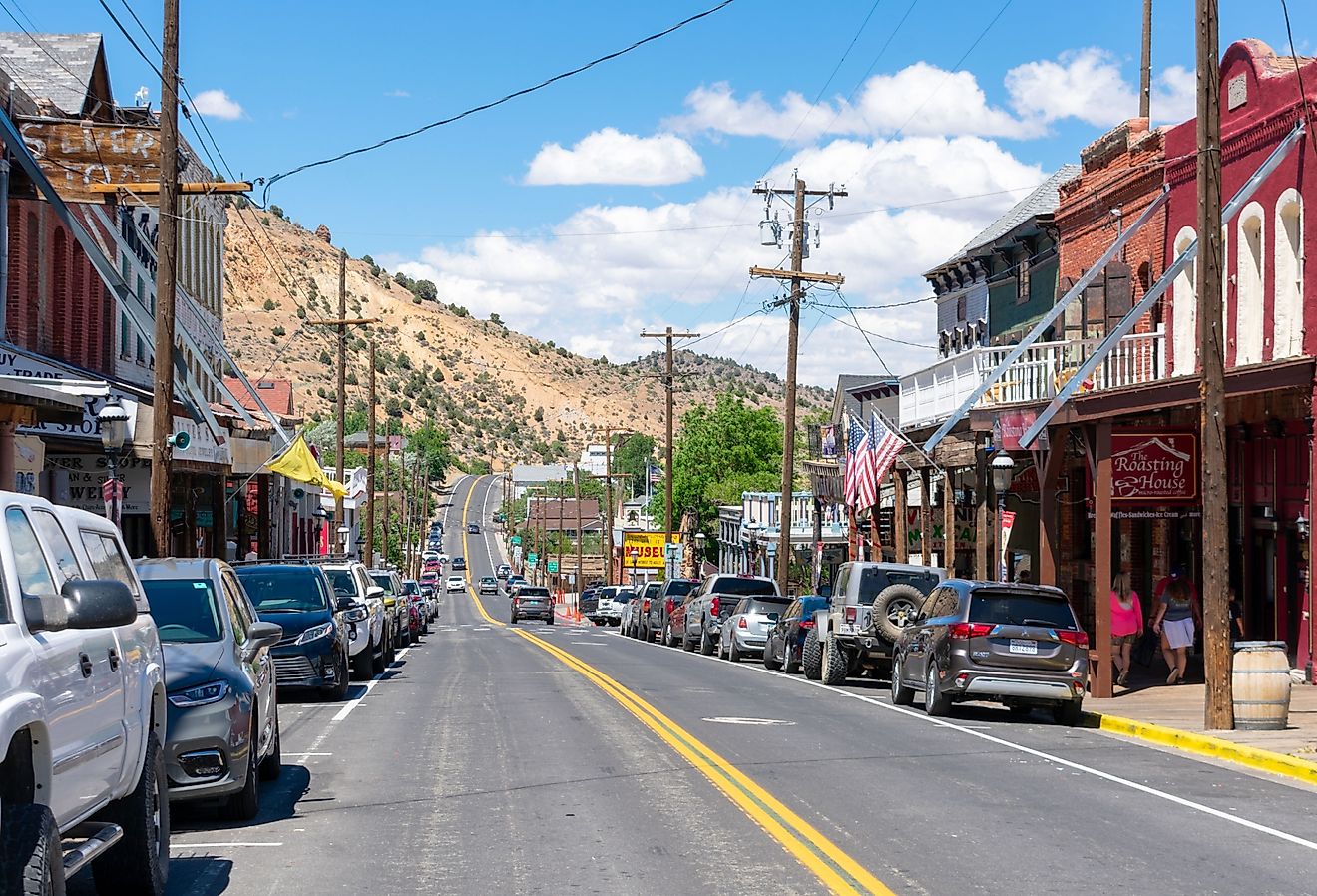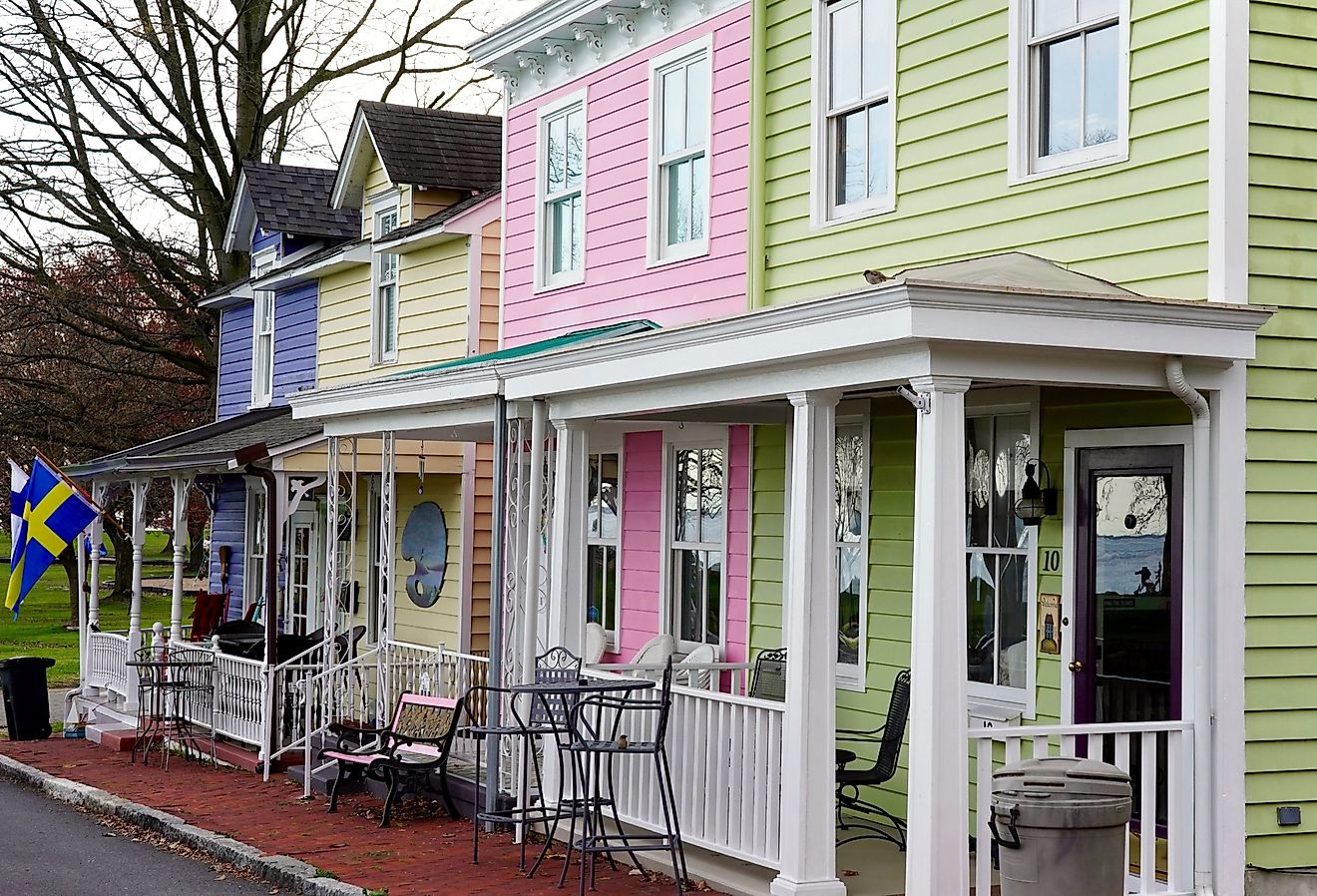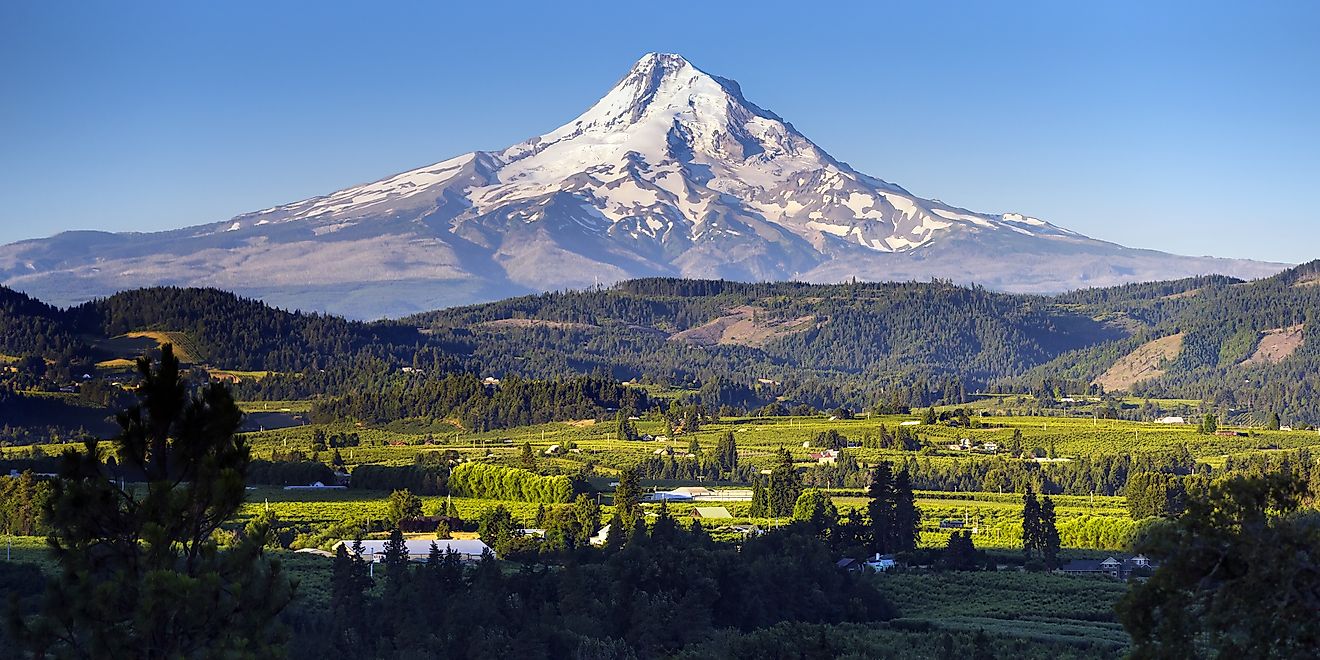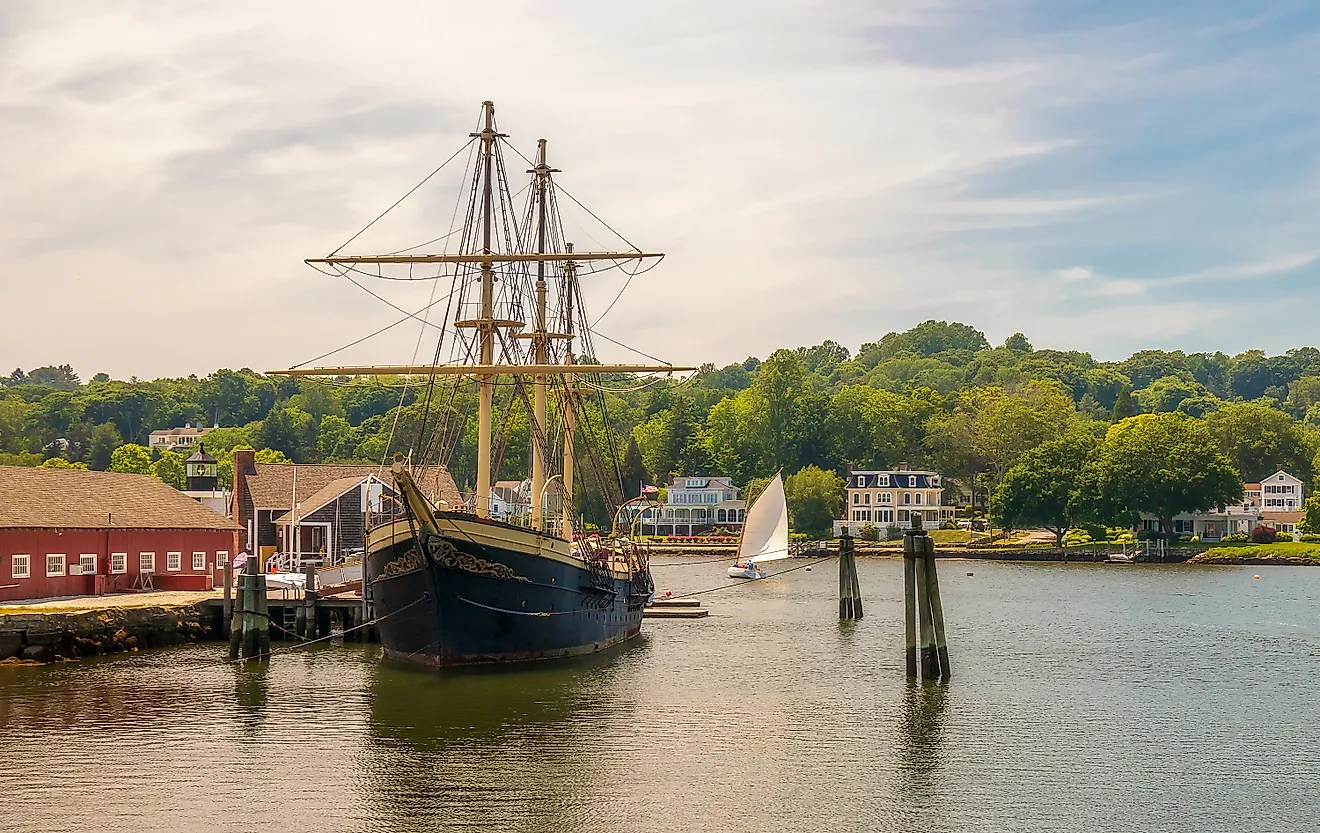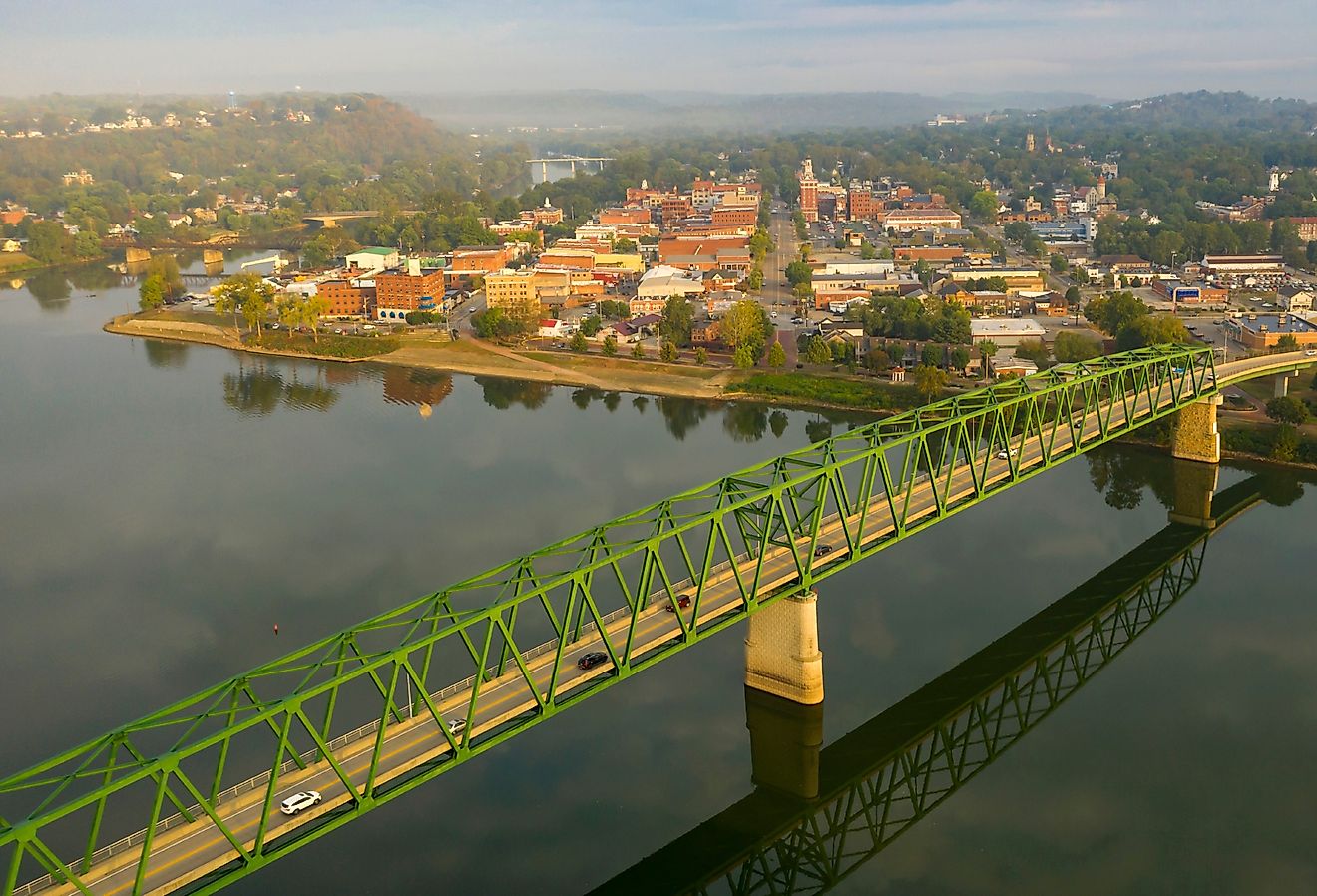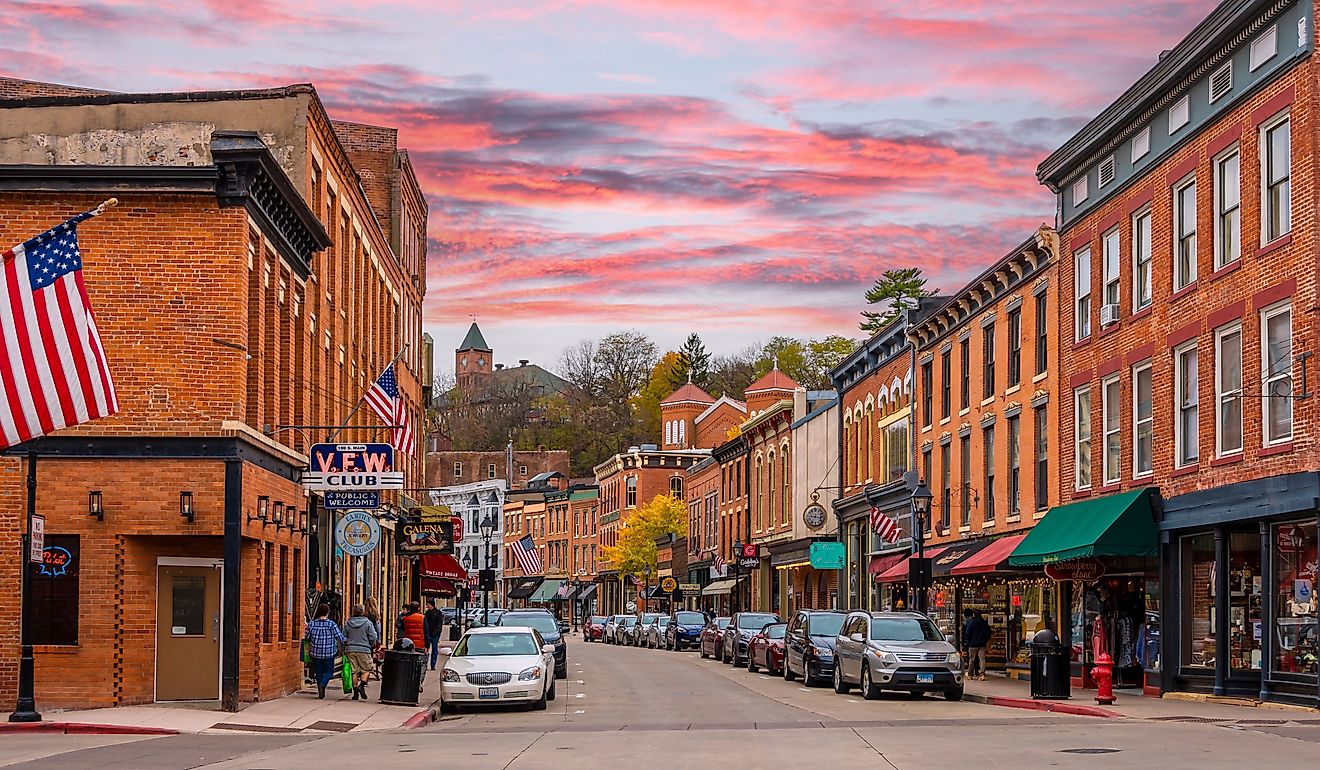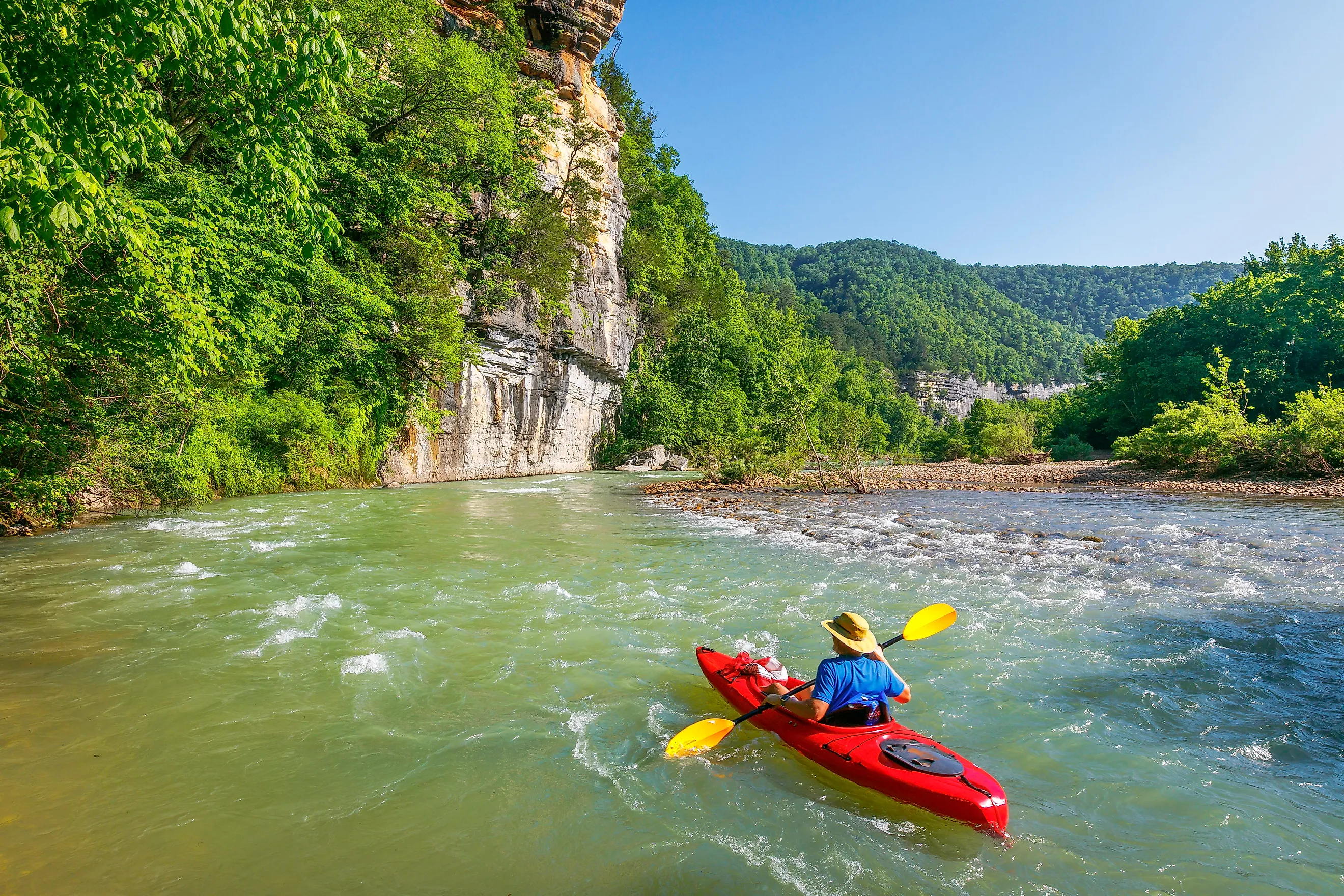
2025's 11 Most Scenic Arkansas Towns
There’s a good reason Arkansas is known as “The Natural State.” With its rolling mountains, sparkling rivers, and endless stretches of forest, the whole state feels like a picture-perfect postcard come to life. And tucked into all that beauty are small towns that serve as front doors to some of the South’s most breathtaking scenery. One minute you’re driving through a sleepy main street, and the next, you’re rounding a bend to see mist rising off a creek or golden light spilling over pine-covered hills.
In 2025, these 11 small towns shine as places where nature isn’t just a backdrop—it’s part of everyday life. These charming communities invite you to slow down, follow the rhythm of the rivers, breathe in the sweet scent of the trees, and soak up the kind of peace you can only find in a place as natural as the state of Arkansas.
Jasper
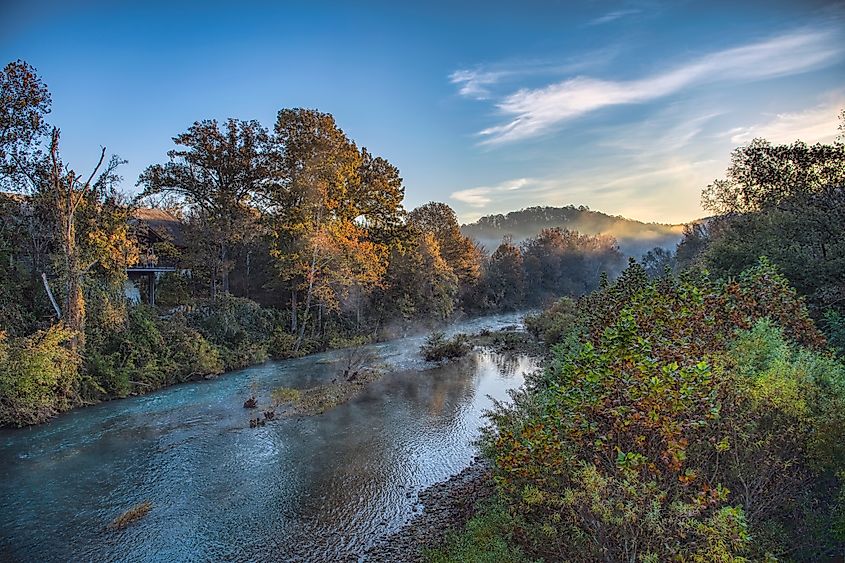
Jasper is one of Arkansas’s most naturally awe-inspiring towns. Surrounded on all sides by the Ozark-St. Francis National Forest, the landscape has dramatic bluffs, densely wooded hollows, and some of the clearest skies in the state. The Buffalo National River flows nearby, carving a winding, untamed path through limestone ridges and offering endless opportunities to connect with nature.
The river’s emerald-green pools reflect the sheer rock walls of places like Steel Creek, while hiking trails like the Big Bluff Trail offer unforgettable views from above. Elk roam freely in the valleys just outside town, most notably in the Boxley Valley, where misty mornings reveal grazing herds. During autumn, the hills erupt in fiery reds and oranges, turning every bend in the road into a postcard.
Jasper’s charm lies in its untouched surroundings. Whether you're paddling through a quiet bend of the Buffalo, standing atop a ridge and taking in the view, this Ozark Mountain town invites you to slow down and truly see the wild beauty of Arkansas.
Mountain View
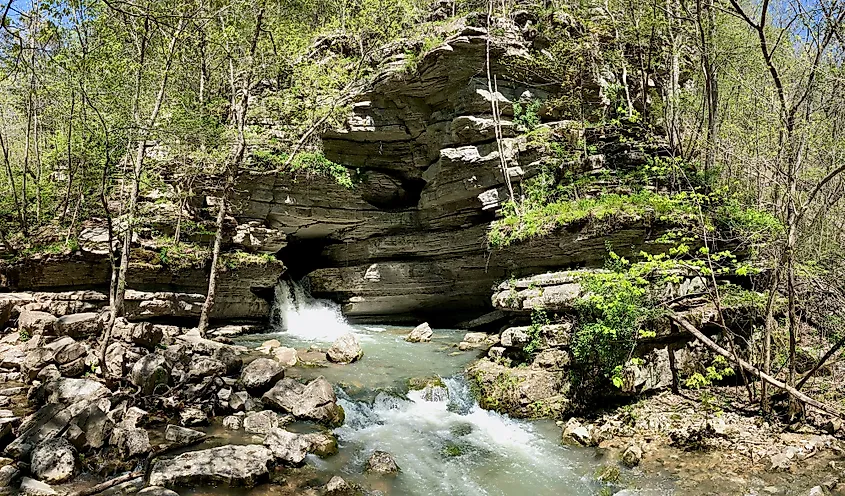
Mountain View is a town where the landscape seems to sing—literally and figuratively. While it's known for preserving Arkansas’s folk music traditions, the surrounding natural scenery makes this place truly unforgettable. Craggy ridges rise on all sides, thick with oak and hickory, while winding country roads weave through valleys that change character every season. In spring, wildflowers cover the hillsides; in fall, the trees blaze with fiery color under crisp, blue skies.
Just beyond the town’s edge lies the vast expanse of the Ozark-St. Francis National Forest, where trails lead to quiet overlooks through dense woods. A few miles north, Blanchard Springs Caverns Recreation Area adds an underground wonder to its beauty—its ancient limestone formations and subterranean streams reveal another layer of the region’s natural charm. Above ground, Sylamore Creek glides through the hills, its clear, calm waters perfect for paddling or simply sitting beside, as you soak up the beauty around you.
In Mountain View, the connection to nature feels constant and easy. Whether you’re walking a trail that disappears into the woods or listening to local musicians play bluegrass, the surrounding wilderness is always within reach, and that's just the way the locals prefer it.
Heber Springs
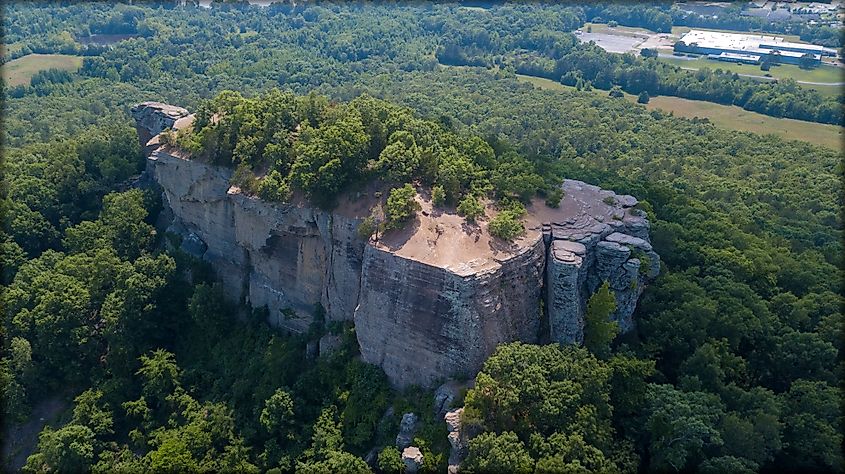
While Heber Springs draws its name from the seven natural springs in Spring Park, the real scenic treasures lie just beyond town. The community sits near Greers Ferry Lake and the Little Red River, offering some of the state's most striking and expansive waterways. Greers Ferry Lake is a popular tourist attraction with its outdoor recreational activities, such as boating, fishing, and swimming.
The Little Red River flows just below Greers Ferry Dam, and its waters are famous for trout fishing. Thanks to regular stocking by the Arkansas Game and Fish Commission, this stretch of river has become a haven for anglers. Overhead, bald eagles glide effortlessly on mountain thermals or perch in tall trees along the shoreline, while seasonal wildflowers line the paths that wind through woods and along the water.
Sugarloaf Mountain rises just east of town for those craving a view from above. A moderate climb rewards hikers with a sweeping panorama. From lakeside stillness to wooded trails and mountaintop views, Heber Springs offers a refreshing escape into the natural heart of Arkansas.
Mena
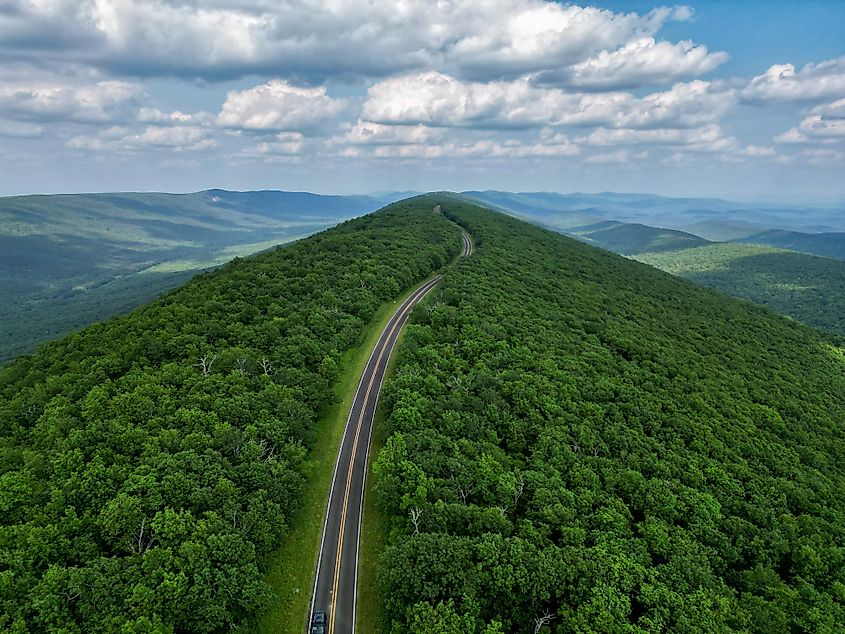
Winding road in the Arkansas Ouachita National Forest on Talimena Drive.
Mena is the county seat of Polk County in the southeastern portion of the state, near the base of Rich Mountain, the state's second-highest peak. The community acts as a natural gateway to the Talimena Scenic Drive, an unforgettable route that stretches through the Ouachita National Forest, offering panoramic views from every curve and crest.
The Ouachita Mountains differ from the jagged Ozarks to the north—they're older, more rounded, and covered in a dense, shifting canopy that turns golden in the fall and bursts with green in spring. The forest is home to a wide array of wildlife, from deer creeping through the undergrowth to the rare red-cockaded woodpecker tapping in the pines. Streams and waterfalls thread through the hills, offering a refreshing soundtrack to the peaceful surroundings.
Sunrise over Rich Mountain is a quiet spectacle, with soft light spilling through the trees and morning mist hugging the valleys below. Trails crisscross the area, leading hikers and wanderers to rocky outcrops and hidden glades. In every direction, there’s a new view to discover, and a new piece of wilderness to admire.
Calico Rock
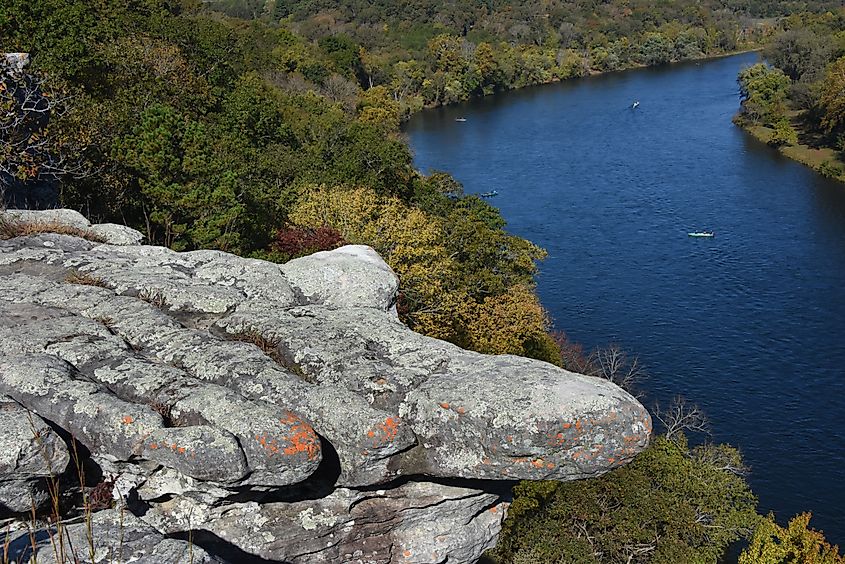
Calico Rock rests in the highlands of northern Arkansas, named for the streaks of earthy reds, warm golds, and soft grays that run through its prominent bluff. These colorful layers, formed over centuries, give the landscape a weathered beauty that tells a story of time, pressure, and patience. The White River flows gently past Calico Rock, bordered by thick woods and soft, rising hills. Along its banks, life stirs constantly—songbirds dart between the branches, turtles bask on sun-warmed stones, and visitors drift downstream, carried by the current through some of the most tranquil scenery in northern Arkansas.
Beyond the river, the land gently climbs into the surrounding hills, where old-growth forests and narrow pathways lead into secluded groves. It's a place where each turn in the trail offers something different: a view across the valley, the sudden call of a hawk, or the quiet hush that settles in dense stands of pine.
Part of Calico Rock’s quiet mystique lies in the remnants of East Calico—an old boomtown from the early 1900s. Though time has worn down the buildings, the preserved foundations and weathered structures offer a rare glimpse into the town's vibrant past. Exploring these silent structures, with their crumbling facades and hidden stories, adds depth to the town’s natural surroundings. Whether you're meandering through this forgotten corner of history or drifting along the White River beneath towering bluffs, Calico Rock offers the chance to see Arkansas in one of its most authentic and quietly beautiful forms.
Ponca
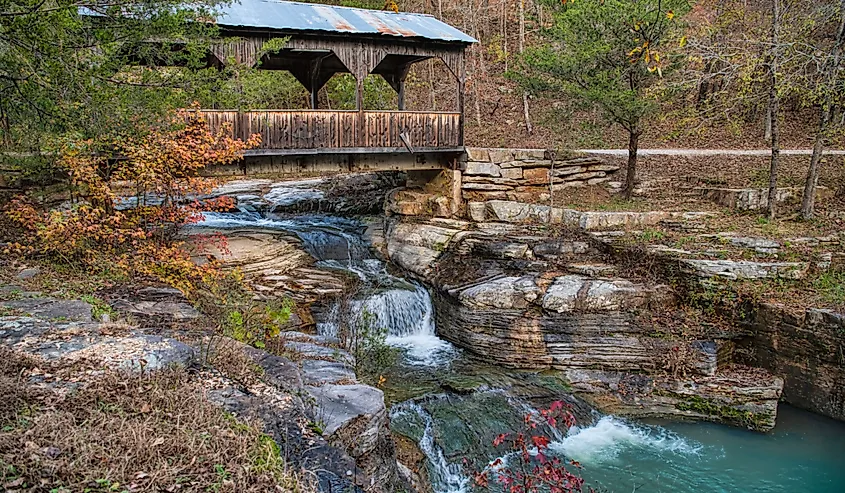
Ponca feels like it was carved right into the heart of the wilderness. With the towering cliffs and steep ridgelines, this tiny mountain town sits in one of the Ozarks' most dramatic and untouched corners. The nearby Buffalo National River, America’s first designated national river, flows freely through the area, offering fantastic kayaking and paddling opportunities. Trails like the Lost Valley Trail and the route to Whitaker Point (also known as Hawksbill Crag) lead hikers to waterfalls, hidden caves, and overlooks that feel like the edge of the world.
Ponca’s setting feels far removed from modern life's pace, making it one of the best places to visit. It’s a place where the night sky still shines bright, wildlife moves freely, and every trail leads deeper into the quiet beauty of the Ozark wilderness. For anyone looking to escape into nature, Ponca offers a raw and powerful glimpse of the Natural State at its wildest and most beautiful.
Eureka Springs
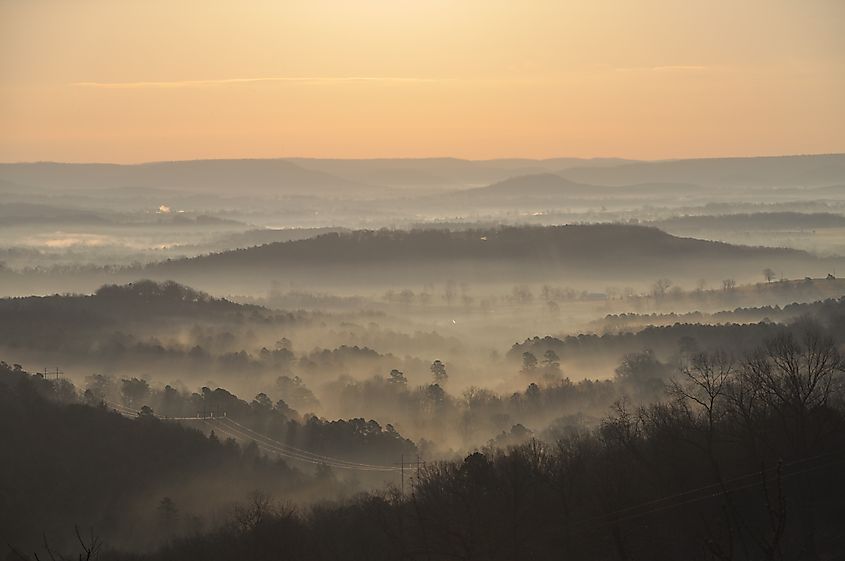
Sitting on the steep hillsides of north-central Arkansas, Eureka Springs is as much a work of art as a town. Its winding streets curve around the natural contours, and its historic Victorian-era buildings seem to grow right out of the rocky terrain. Once thought to have healing powers, natural springs refresh the area, nourishing gardens, groves, and the town’s famously lush setting.
What sets Eureka Springs apart isn’t just its scenery—it’s the creative energy woven into that landscape. Artists, sculptors, and makers have long come here, inspired by the surrounding forest, misty hollows, and ever-changing light. Outdoor sculptures, murals, and quirky galleries pop up along walking paths and tucked-away staircases, blending with the trees and stone like they’ve always belonged.
The hills surrounding the town are dense with hardwoods, creating a vivid canopy that shifts with each season—vibrant and full in spring, fiery and golden in the fall. Deep ravines, small waterfalls, and mossy creeks lend a sense of discovery to every trail and overlook. Paths like the Lake Leatherwood Loop and the Black Bass Lake Trail wind through peaceful woods and beside still waters, where herons and warblers add music to the beauty of the Ozark Mountains.
Hardy

Hardy may be small, but it sits in one of northern Arkansas's most naturally expressive corners. Here, the landscape doesn’t unfold all at once—it sneaks up on you in quiet, layered moments. One minute you’re passing through a shaded bend in the road, and the next, the Spring River comes into view, slipping through the rocks with a quiet urgency. The Spring River’s cool, spring-fed flow creates its ecosystem, where native grasses sway along the banks, and the water seems to hum with life, even in the heat of summer.
Look beyond the water, and you’ll find a landscape shaped by erosion and endurance. Weathered stone ledges emerge from the hillsides, overgrown with moss and wild vines. Narrow footpaths lead to rocky ledges that open suddenly onto views of tree-lined valleys and distant ridgelines. It's a place that rewards curiosity, not with grand views but with small, perfect details.
Oark
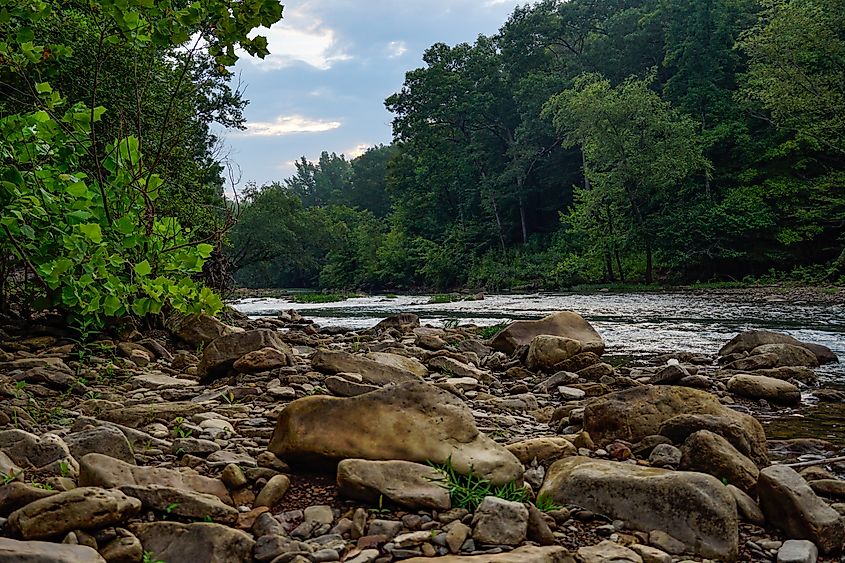
Rocky River Bank On Mulberry River in Oark, Arkansas
Oark is an unincorporated community in Johnson County that feels like one of those rare places where the road ends and the wilderness begins. The Mulberry River winds near the edge of town, and the surrounding Ozark National Forest is a maze of unpaved roads, creek crossings, and hidden trails. Wildlife thrives here—deer, wild turkey, and even black bears call these woods home.
Known for its wild, scenic beauty, the river slices through steep ridgelines and dense stands of hardwood, offering breathtaking views from the banks or along the forested bluffs above. In the spring, the hillsides burst to life with blooming dogwood and redbud, while autumn blankets the landscape in deep amber and rust tones.
Oark feels like a place out of time. For those seeking a true immersion in the Natural State’s wild heart, it delivers a raw, unfiltered experience—one defined by silence, space, and the unshaped beauty of the land itself.
Gilbert
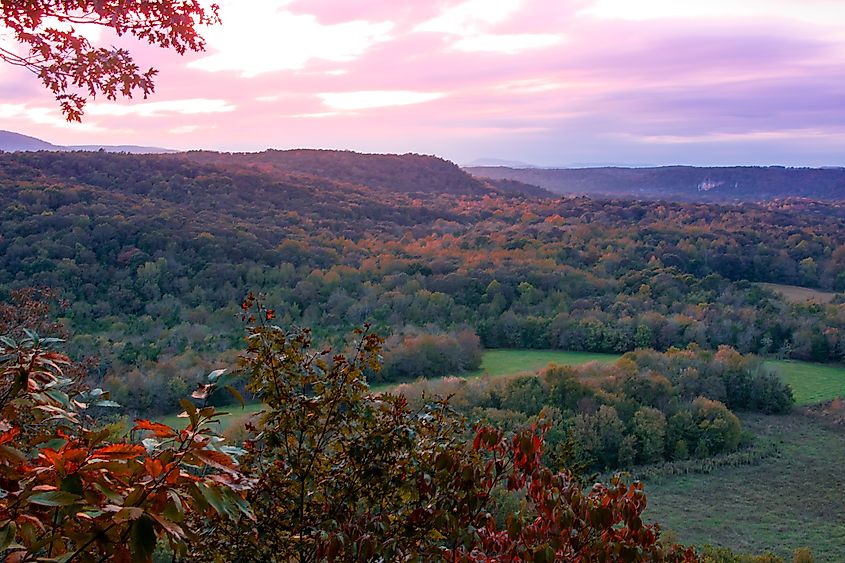
Gilbert is a quiet outpost surrounded by some of Arkansas's most untouched natural beauty. With only about 25 residents, it’s one of the smallest towns in the state, but what it lacks in size, it makes up for in scenery. The Buffalo River flows gently past, its clear, spring-fed waters carving through limestone cliffs, gravel bars, and thick bottomland forest. As one of the last undammed rivers in the lower 48 states, it moves with its own rhythm—peaceful, steady, and wild.
Above the river, densely wooded hills rise steeply, layered with trails that lead to unexpected wonders: tucked-away caves, ridge-top lookouts, and waterfalls that appear after a good rain. Just upstream, the Tyler Bend area within the Buffalo National River Park opens up to expansive panoramic views. From here, you might catch the glide of an eagle overhead or watch early morning fog drift through the trees like smoke. Gilbert may be small, but its landscape tells a much bigger story—one of quiet persistence, natural rhythm, and the enduring beauty of wild places.
Hot Springs
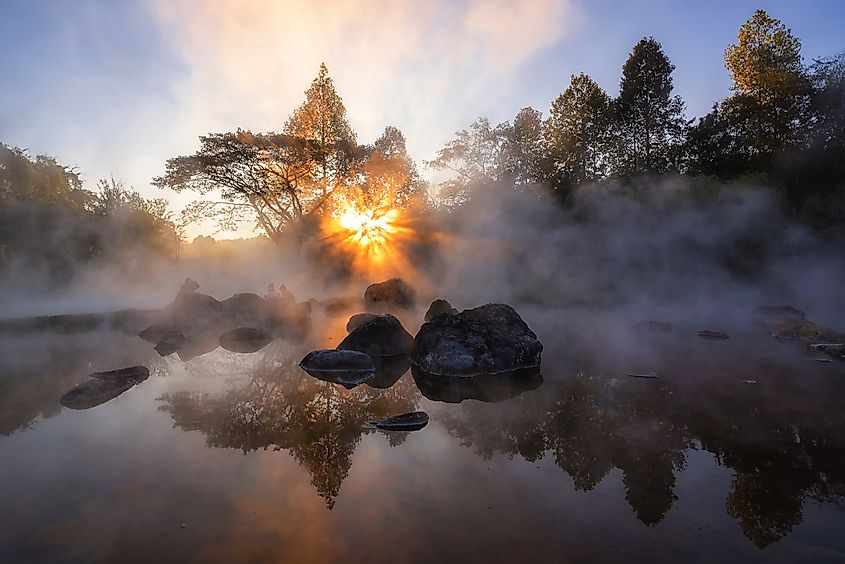
Hot Springs sits within a valley enclosed by rolling ridgelines, many of which are part of Hot Springs National Park—a rare and remarkable blend of natural and historic preservation. The park’s forested slopes, rocky outcrops, and winding footpaths feel more like a mountain retreat than an urban escape. Trails like the Goat Rock Trail and the Sunset Trail offer stunning views of the surrounding hills, particularly in fall when the hardwood canopy turns brilliant gold and crimson. In spring, wildflowers bloom along shaded creeks and in the open meadows that dot the landscape.
Just beyond the town, the Ouachita Mountains spread out in soft, green waves, their ancient peaks some of the oldest in North America. Both nestled into the hills, Lake Catherine and Lake Hamilton reflect the skies and treetops in glassy, quiet waters. Eagles often soar above the ridges, and white-tailed deer are familiar companions along early morning walks through the woods.
In Hot Springs, steam rises from the ground, trails disappear into the trees, and the land invites you to slow down and breathe deep.
Conclusion
Whether it's the stillness of a high mountain overlook, the call of a heron along a riverbank, or the sound of wind threading through a pine forest, these Arkansas communities remind us that there’s peace to be found in the rhythms of the land. In an age of constant motion, Arkansas’s most scenic towns offer a chance to slow down, step outside, and rediscover the deep, grounding presence of the natural world.
No matter which direction you go—from the quiet southern hills to the northern peaks—each town holds something special: a view, a sound, a moment you didn’t expect. And once you've felt that connection, it's hard not to carry a piece of the Natural State with you, long after the journey ends.

